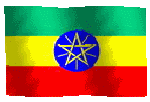

 Embassy Staff Embassy Staff
 Ethiopia-
Quick Facts Ethiopia-
Quick Facts











 Community
Services Community
Services
 Links Links
 News News

Contact Us
No.3 Xiu Shui Nan Jie
Jan Guo Men Wai
Beijing 100600
P. R. China
Tel: 0086-10-65325258
Fax:0086-10-65325591
E-mail:
[email protected]
|
|
Utilities
& Infrastructure
1 Electricity
Ethiopia obtains its electricity from two sources - hydroelectric power
plants and thermal power stations. The former, with an aggregate power
generation capacity of 350 MW, is by far the largest source. All hydroelectric
power plants are connected to the national grid, which covers all major
cities and towns.
The supply system is being expanded through the construction of additional
power plants at four sites, two of which, with an aggregate capacity of
250 MW, are at an advanced stage. Ethiopia's hydropower potential is estimated
at 30,000 MW, of which currently only about 1% is utilised. On average,
power costs are $0.07 per kWh.
2 Water
All major cities and towns have municipal water supply systems, and underground
water is abundantly available in most parts of the country.
3 Roads
Ethiopia's road transport infrastructure is relatively at a lower stage,
but the improvement of the country's road network has been identified
by the government as a core component of the economic reform programme.
More than 20% of the government's total capital budget in 1998 was allocated
to road construction and repairs. US$3.9 billion has been earmarked by
the government to expand the road network by 80% over a period of 10 years.
International highways link Addis Ababa to the neighbouring countries
of Djibouti, Eritrea and Kenya.
4 Rail and Ports
A limited rail service stretching 780 km links Addis Ababa with the port
of Djibouti via the eastern Ethiopian city of Dire Dawa. Currently, Ethiopia
uses Djibouti for its import-export trade. The shift from Asab in Eritrea
to Djibouti appears to have occurred smoothly, without negative effect
on Ethiopia's trade. Other ports in the region include Berbera, Port Sudan
and Mombassa.
5 Air
Aviation is an important means of transport in Ethiopia, with 18 domestic
and 3 international airports. Addis Ababa has developed as an important
aviation hub serving North America, Europe, the Far East, Africa and the
Middle East. Ethiopian Airlines flies to over 40 destinations in Africa,
Europe, North America, Asia and the Far East, with about 50 weekly outbound
flights from Addis Ababa.
6 Telecommunications
Telecommunication services, including telephone, telex, facsimile, internet
and data communication, are currently provided by the state-owned Ethiopian
Telecommunications Corporation.
Direct microwave links are available to all major cites and towns in the
country. International communication links are maintained via satellite.
Microwave links exist with Eritrea, Kenya and Djibouti. Presently, about
200,000 direct exchange lines are served. This number is expected to increase
dramatically to over 750,000 lines in two years' time. A mobile system
has been introduced recently in Addis Ababa.
Local calls are among the cheapest in Africa and, although Ethiopia has
a low density of lines per head of population, Addis Ababa and other major
towns are reasonably well served by regional standards.
|



